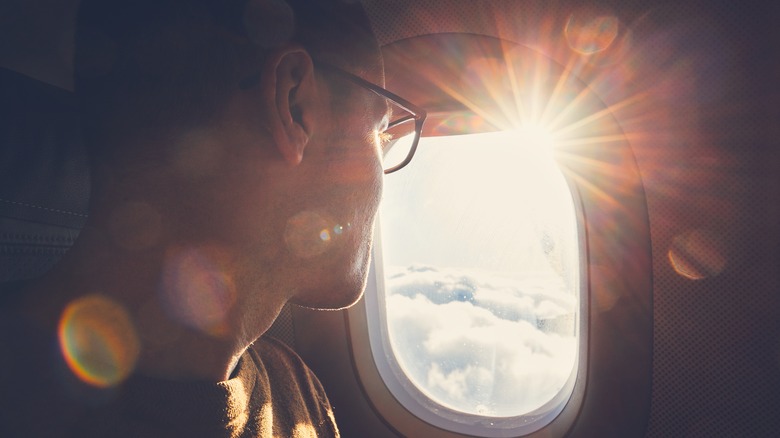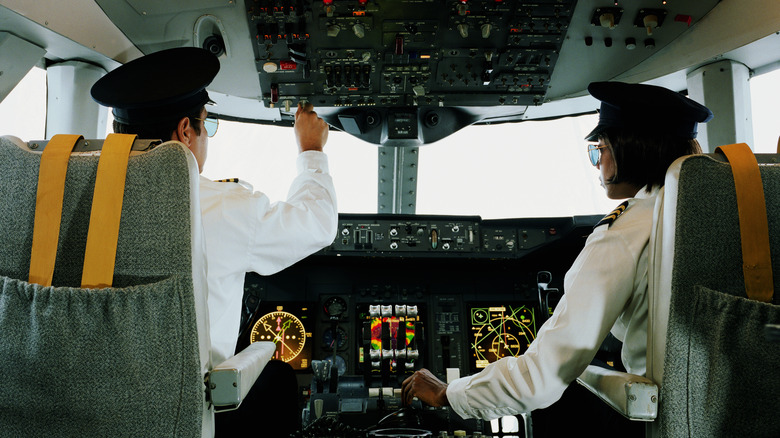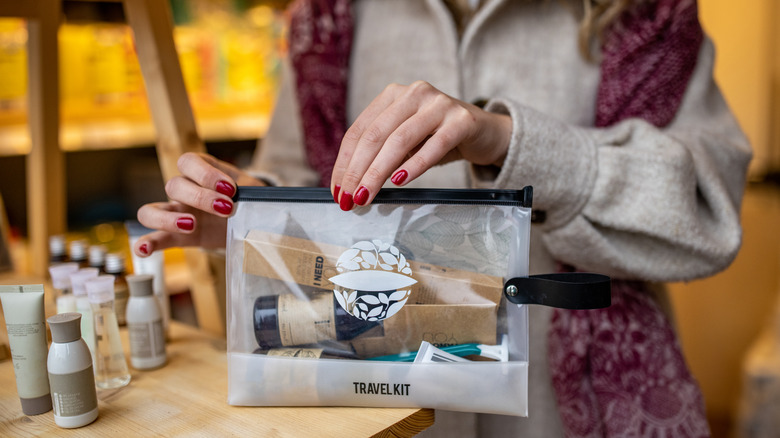The Unsettling Reason It Really Is Best To Wear Sunscreen While Traveling By Plane
From ignoring liquid rules to leaving headphones at home, there are tons of rookie mistakes first-time fliers should try to avoid. Then, there are less obvious mistakes that might even be overlooked by the most seasoned travelers. One such blunder is not wearing sunscreen, and the reason may surprise you.
According to research by Mirce Akademy (via Iris Publishers), UV radiation is twice as strong at 30,000 feet (standard altitude of commercial airplanes) than on the ground. In other words, your skin may be more vulnerable to sun damage during a flight. Yup, the window seat on a plane isn't as great as you think. As it turns out, airplane windshields do not provide full protection from UVA rays. More so, past research points to a shocking similarity between tanning beds and cockpits. Long story short: Protect your skin with sunscreen when flying. As you've probably guessed, close that window seat shade when you can, too.
The intensity of UVA transmission on airplanes
In a 2014 study, The Journal of the American Medical Association examined melanoma risks for pilots and cabin crew. Research findings concluded that when flying for just under an hour, pilots are exposed to the same levels of UVA radiation emitted in a 20-minute tanning bed session. Talking to The Points Guy, dermatologist Cherise Mizrahi-Levi explained, "While there is negligible transmission of UVB rays through plastic and glass windshields, UVA transmission through these windows is significant." Unprotected exposure to UVA rays can lead to permanent skin damage.
Due to less airplane time and smaller windows, passengers face lower risks of skin damage than pilots. But that doesn't mean they shouldn't take preventative measures on flights. Mizrahi-Levi advised travelers to apply a broad-spectrum sunscreen (UVA and UVB protection) that's at least SPF 30. "As a general rule of thumb, you should apply sunscreen 15 minutes before going outside and reapply every two hours during UV exposure," they shared.
Optimal skincare products for flights
Flying can be rough on the skin for numerous reasons. Dermatologist Geeta Yadav told W Mag, "When you combine the high altitude, increased UV exposure, and recirculated air of an airplane, it can be a recipe for complexion disaster." Plus, low airplane humidity may leave your skin dry and sensitive. So, what are the best ways to protect your skin when flying?
In addition to applying sunscreen, Yadav recommends using biocellulose sheet masks for hydration. With key ingredients such as hyaluronic acid, shea butter, and sodium PCA, serums and moisturizers could be your best friends. Yadav explained, "These will draw water from the air and seal it into the skin."
Cabin crew members concur that proper skin care is crucial on airplanes. Former flight attendant Beth Windsor told Business Insider, "Having spent years battling the effects flying has had on my skin, I always give myself a mini facial on long-haul flights. I use an intense hydration sheet mask and under-eye gel patches then apply my moisturizer and SPF 50." Windsor doesn't neglect her routine before shorter flights, as she applies moisturizer, vitamin C serum, and SPF. As far as post-flight skin care, you should also avoid taking a hot shower.


